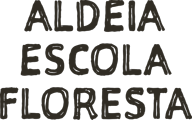Aldeia-Escola-Floresta / Village-School-Forest
The Tikmũ’ũn people, better known as Maxakali, are ancient inhabitants of the forests that covered the east of the current state of Minas Gerais (MG). Centuries of invasions and a relentless process of decimation expelled these people from their traditional territory. Currently, they live in some of the smallest demarcated indigenous lands in Brazil, between the municipalities of Bertópolis, Santa Helena de Minas, Ladainha and Teófilo Otoni, in the Mucuri River Valley (MG). Altogether, their demarcated lands do not add up to 6,000 acres. Therefore, due to territorial pressure, from time to time, some families have to leave the limits of reservations in which they were confined in search of another land, hãmnõy, in the Maxakali language. That was how, in 2021, on September 28 at dawn, more than 100 tikmũ’ũn families repossessed a land belonging to the Union in the region of Itamunheque, a rural area in the municipality of Teófilo Otoni, in Minas Gerais.
In the new territory, the couple of teachers, artists and filmmakers Sueli and Isael Maxakali, together with local leaders and some supporters, conceived the creation of the Village-School-Forest (Aldeia-Escola-Floresta), a space for exchanging knowledge, reforestation, recovery of water springs, workshops for art and cinema and strengthening of the musical, ritual and cosmological complex known as yãmĩyxop. As the couple defines it: “we call it the Village-School-Forest because the entire village is a school for us. The river is a school, the forest is a school, the animals too. Every place in the village is a school”.
Since the beginning of the pandemic, this community left The Green Village (Aldeia Verde) in Ladainha (MG) in search of a territory where their children could have access to a river, where they could renew their rituals, plant and build their houses. They lived shortly in a piece of land that was at a distance of about 4 km from the Engenheiro Wenefredo Portela Power Plant, which had structural problems that caused risks of rupture. Then, deceived by swindlers, they settled on a farm near the District of Concórdia, which they called Hãm Kaĩm Village. Since then, village leaders have been talking about their struggles all around Brazil: at the Bienal de Arte in São Paulo, at film festivals, at round tables, at universities. The struggle of this community is the struggle of the entire Tikmũ’ũn people, who should receive great recognition from the Brazilian state and all its citizens, and it is the struggle of all those who believe in the need to live on a biodiverse planet, with the freshness of forests and the richness of clean waters. It is the struggle for the autonomy of peoples. It is the struggle of those who believe that it is possible to produce without cutting down forests and destroying more lives. In the words of Isael Maxakali:
“My dream is to hold Shaman’s Meetings (Encontros de Pajés), strengthen our culture, make projects for people to get to know us very well and, through that, strengthen us as well. This is my project dream. That’s why we need a campaign to buy land faster to create this differentiated school. My dream is to organize the village properly, my dream is to have a movie theater with a big screen to show our culture, our film and other villages’ films too, from the Xingu, the Guarani. My dream is to teach, teach non-indigenous and also indigenous students, teach in workshops. I really want white people to see our works, our movies, our books and our drawings and to help us. I want them to hear our words, see our paintings, and meet our yãmĩyxop. And help us! So that all Maxakali can live happily! So that we can strengthen our yãmĩyxop, with the help of the ãyuhuk, so that our children don’t get so sick. So that we can plant all the fruit trees in this land, so that our yãmĩyxop can have something to eat, so that women can fish in the river and that we make our school here and that non-indigenous children can come and meet us, visit us, and so can our distant relatives. This is my dream!”

